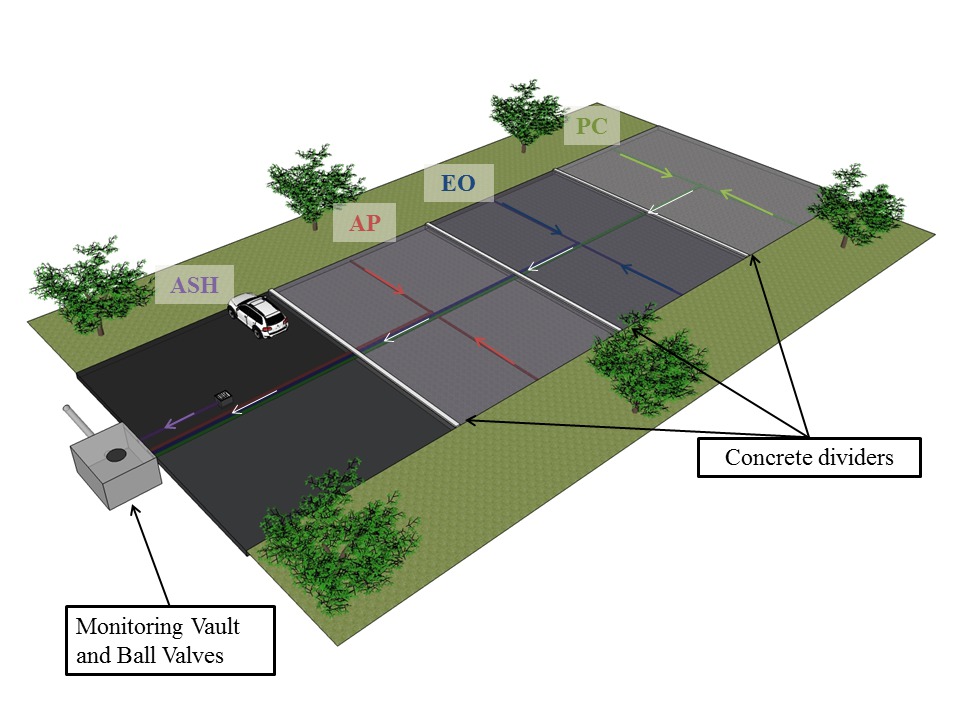Parking lots, streets and highways create large areas of impervious surfaces that contribute to urban flooding and water pollution.
In this contribution to TAC News, Jennifer Drake, Assistant Professor, Civil Engineering, University of Toronto, explains how infiltrating stormwater through a permeable pavement system can help reduce demand on existing infrastructure and protect the environment. Proposed by TAC’s Climate Change Task Force, this feature article profiles climate change-related initiatives of TAC and its member organizations.
Integrating permeable pavements into Canadian cities can help protect against extreme weather conditions by alleviating pressure on existing and aged infrastructure, and simultaneous restoring of natural processes such as recharging to groundwater systems. Using these types of material may help protect the environment and help communities adapt to the effects of climate change in future years.
Permeable pavements are alternative pavement systems that can be used to manage and treat stormwater flows near its source. Over the last five years, researchers at the Toronto and Region Conservation Authority, and the University of Toronto have studied a pilot permeable pavement parking lot located at the Kortright Centre for Conservation in Vaughan, Ontario.
The parking lot (Figure 1) is constructed with four cells of different pavements, traditional impervious asphalt and three permeable pavement products, which filter stormwater allowing it to infiltrate into the soil while underdrains collect and drain surplus water. Infiltrated stormwater collected by the underdrains is sampled and measured in a below-grade monitoring vault.

Figure 1: Layout of the Kortright Permeable Pavement Parking Lot
Pavement components are placed above an aggregate base constructed of 60 mm clear stone which serves as a reservoir that holds and infiltrates stormwater.
Researchers have shown that permeable pavements function well in the Canadian climate and provide several hydrologic benefits including a 50% reduction in peak outflows and a 40% reduction in outflow volume. Direct runoff from permeable pavements was eliminated and small storms with less than 7 mm of rainfall were completely infiltrated into the underlying soils.
Similar to other cold climate studies, permeable pavements have not exhibited any freeze-thaw damage. The high porosity of the pavement allows sufficient space for ice expansion preventing heaving during the winter.
Significant water quality improvements have also been observed during winter and non-winter seasons including:
Infiltrating stormwater through a permeable pavement system alters the size and rate of stormwater flows, to help reduce demand on existing infrastructure and improve the overall quality of water heading to receiving systems.
Using sustainable stormwater management techniques may also improve the safety of parking lots in the winter months by reducing sheet ice build-up on pavement surfaces.